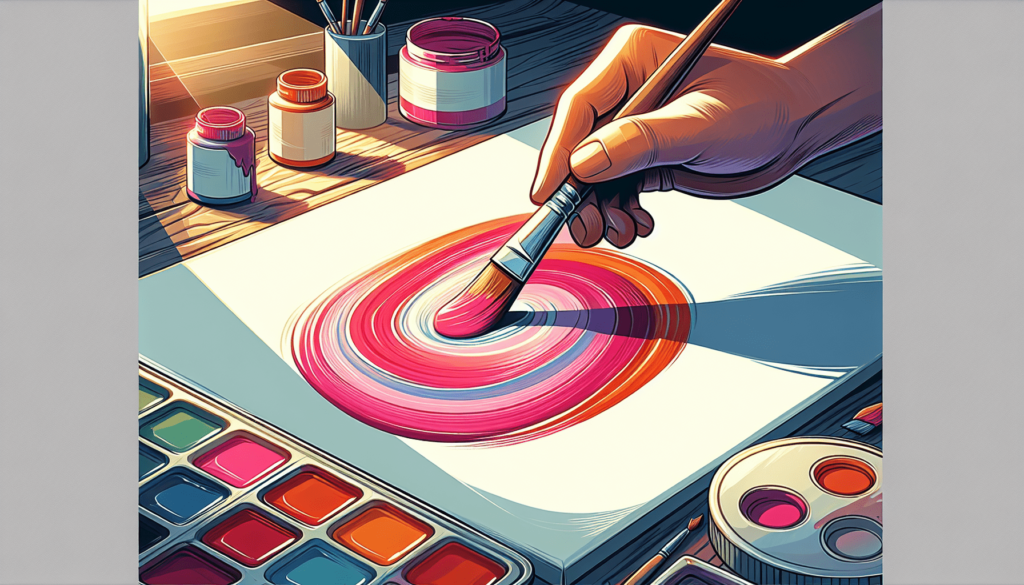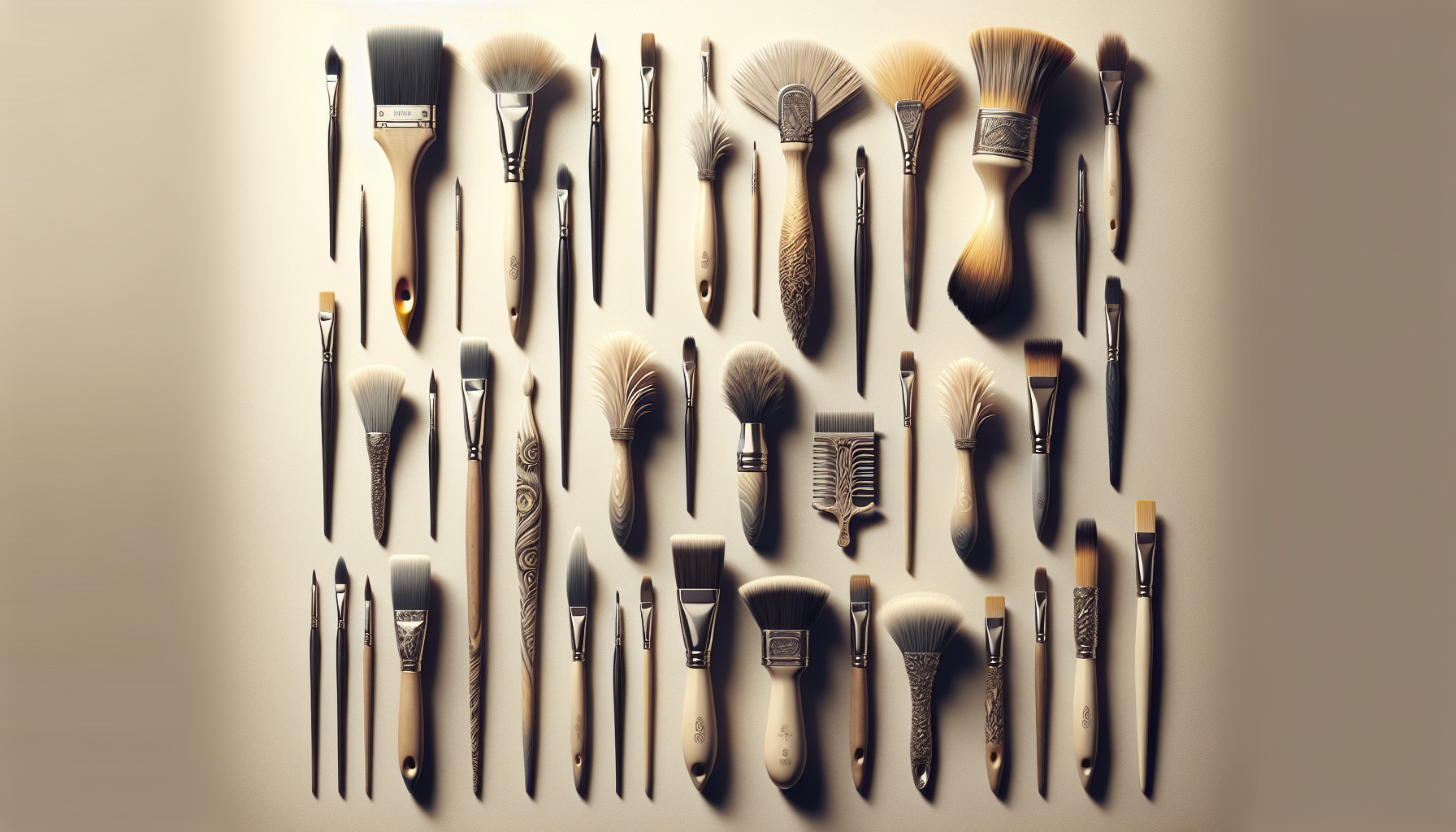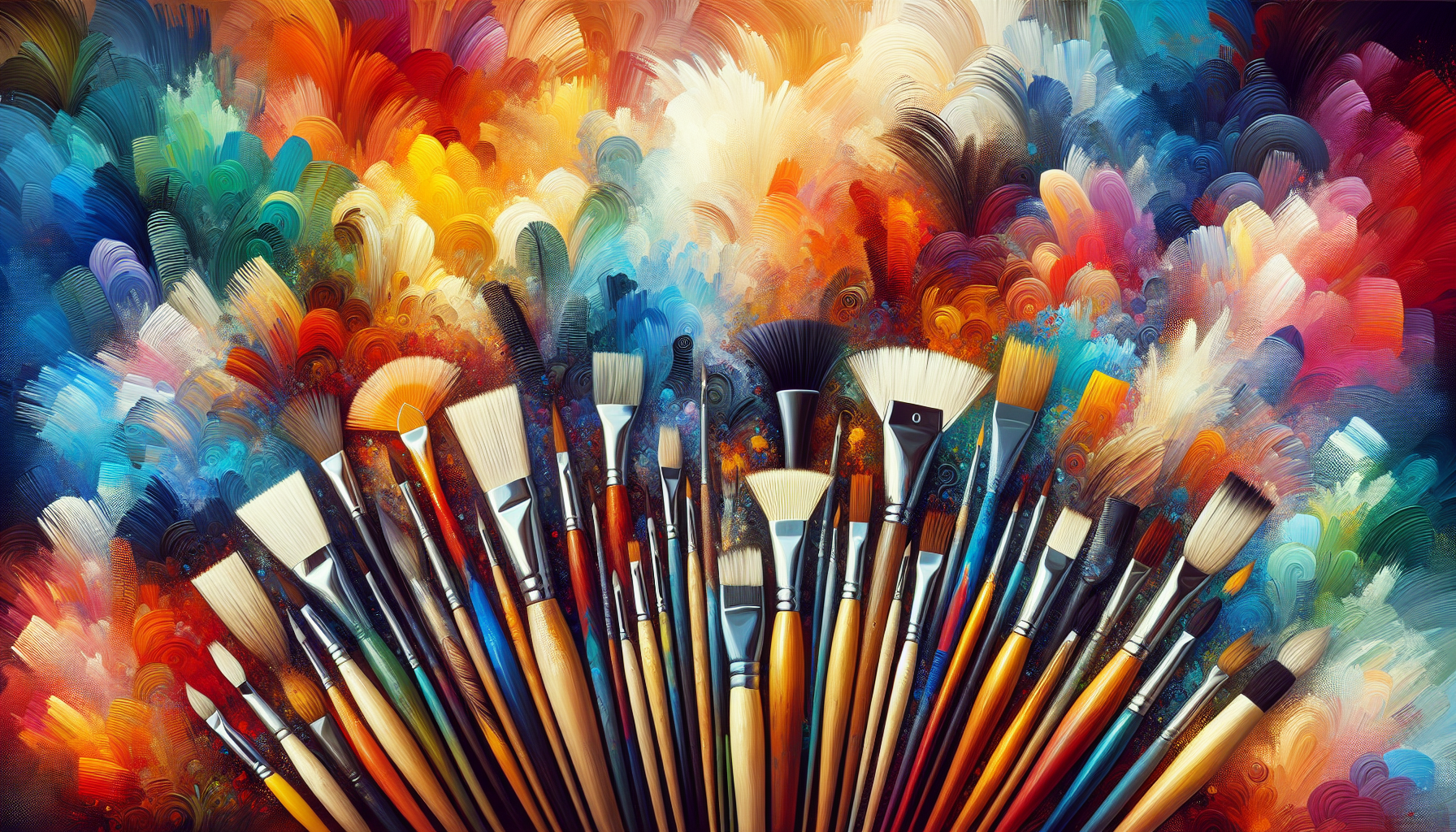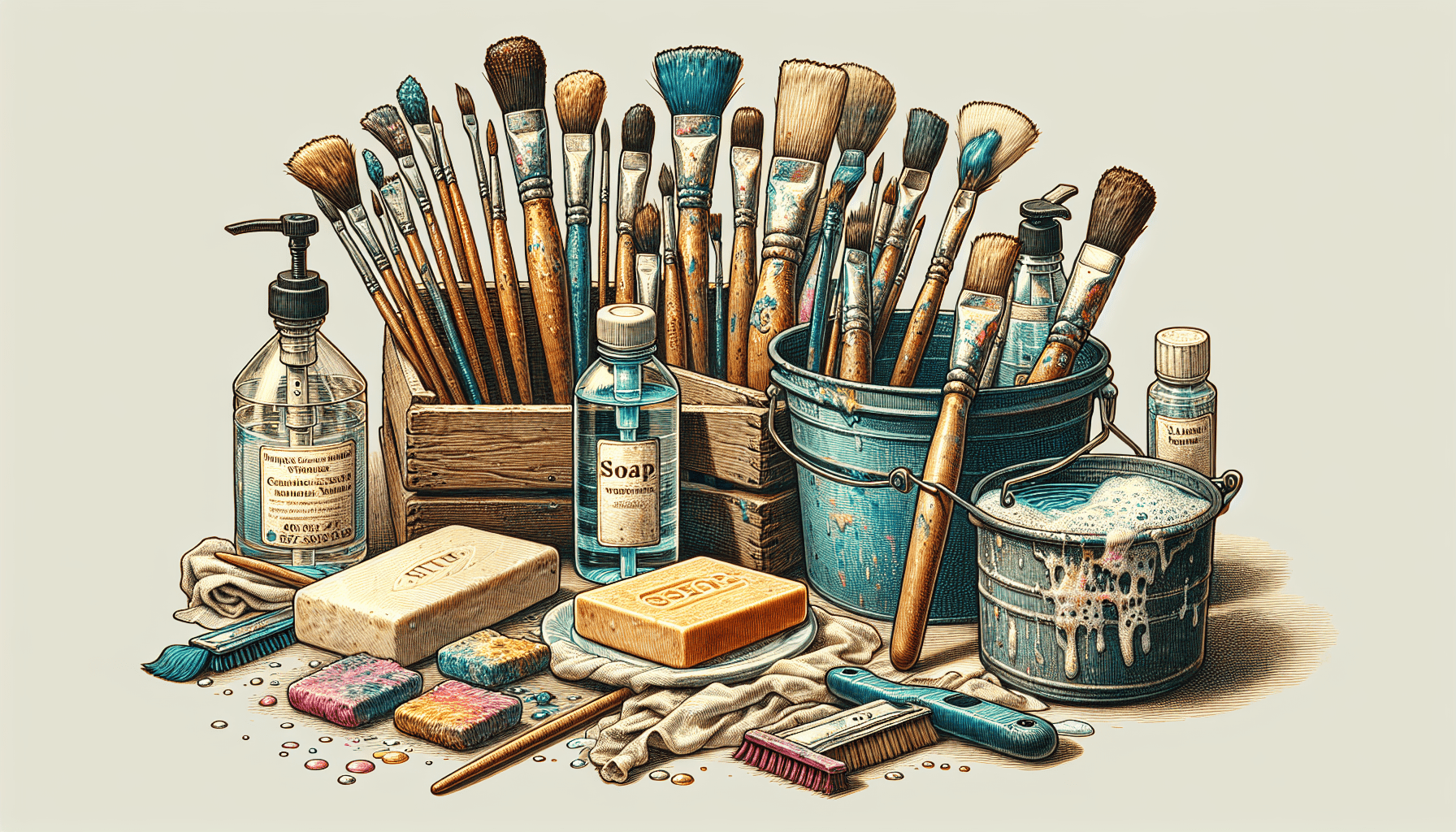In the pursuit of a flawlessly painted canvas or room, you may be faced with the challenge of avoiding pesky brush strokes. “How To Paint Without Leaving Brush Strokes” provides comprehensive guidance on attaining an impeccably smooth finish on your next painting project. From selecting the right tools to engaging the perfect painting techniques, this detailed guide is tailored towards enlightening you on eradicating unsightly brush strokes, paving the way for your inner creative genius.
Choose the right brush
As you venture into the art of painting, the brush you choose plays a crucial role in the outcome of your work. A brush is more than just a tool; think of it as an extension of your hands and creativity. It’s essential to choose it wisely for precise control over brushstrokes and texture.
Select the correct brush type
Various types of brushes are designed for different painting techniques and mediums. Some work better in water color, while others are ideal for oil paint or acrylics. For instance, Natural hair brushes are known for their softer touch and higher paint-holding capacity, which can prove quite advantageous while working on detailed artworks. On the other hand, synthetic brushes, made from nylon or polyester, are durable and apply well across a range of water and oil-based mediums.
Consider the brush size and shape
When choosing your brushes, consider both size and shape. Smaller brushes are perfect for detail work, while larger brushes are great for filling in large areas. The shape is also crucial. For instance, flat brushes can hold a lot of paint, while round brushes are great for detailed line work and the fan brush is used for blending.
Check the brush bristles
The quality of brush bristles can make a significant difference in your work. Stiff bristles, such as hog hair, are ideal for thick paint applications, while softer bristles, like sable, are perfect for thin applications in oil and watercolor painting. Additionally, ensure the bristles are well secured to avoid loose hairs on your painting.
Prepare your canvas
Preparation of the canvas is an important step to achieving a smooth painting. This preparation involves cleaning, priming, and finally, sanding the surface.
Clean the canvas surface
Your first step is ensuring your canvas is clean and free from any dust or dirt. You can easily clean it by gently wiping it with a clean, slightly dampened cloth.
Apply a primer
The next step is applying a primer or gesso to the canvas. Priming helps to prevent your paint from soaking into the canvas, which can potentially damage it. Furthermore, priming gives a smoother and more receptive surface for your paint to adhere to.
Sand the surface
After your primer has dried completely, sand the canvas surface gently using fine-grit sandpaper. This process helps to level out the primer texture, creating an even smoother surface that enhances the application of your paint.

Mix your paint properly
The way you mix your paint can significantly impact your painting results. A well-mixed paint prevents inconsistencies in color and texture across your work.
Use high-quality paint
Starting with high-quality paint is key to avoiding brush strokes. Inferior paints often lack the necessary pigmentation, consistency, and smoothness required for a flawless finish.
Thin the paint if necessary
Depending on the type of paint and the desired effect, you might need to thin your paint using a suitable thinner. Ensure to do so gradually and evenly to maintain the paint’s integrity.
Stir the paint thoroughly
Once your paint is of the right consistency, stir it thoroughly to ensure homogeneity of color and texture. This process helps the pigments to blend properly and boosts the smoothness of your paint when applied.
Master the brushing technique
Your brushing technique is integral to avoiding visible brush strokes. It takes the right combination of brush loading, application style, pressure, and angle to achieve this.
Load the brush correctly
Ensure that you properly load your brush with paint. Too little paint and your brush might streak; too much, and it might drip or clump. Finding the right balance is key. Gently dip the brush into the paint, and get rid of any excess paint by running it against the edge of your paint container.
Apply the paint with smooth strokes
Apply your paint using smooth, long strokes. Short, abrupt strokes can lead to inconsistencies and visible lines. If you’re using a flat brush, start from one end of the canvas and smoothly brush towards the other end. For round brushes, consistent circular strokes may be key, and remember to blend your strokes seamlessly.
Control the pressure and angle
The pressure you apply on your brush influences its contact with the canvas. Too much pressure can lead to unwanted streaks or ridges. Maintain a consistent, moderate pressure throughout your painting process. Besides, maintain your brush at a consistent angle to the canvas surface to avoid discrepancies in the applied paint thickness.

Use the right painting medium
A painting medium modifies the texture and drying time of your paint. The right choice of medium can greatly improve the smoothness of your painting.
Add a painting medium to your paint
Addition of a painting medium can increase the flowability of your paint. A medium like linseed oil for oil paints or a glazing medium for acrylics can make your paint easier to apply evenly.
Experiment with different mediums
Different mediums offer different results. So, don’t hesitate to experiment. Use water, drying oils, acrylic mediums, or even a texture paste. Remember, the aim is to achieve a consistent, easy-to-apply paint.
Follow the medium instructions
Regardless of the medium you choose, ensure to follow the manufacturer’s instructions on the product label. Some mediums require a particular ratio of mix or a certain drying time that one must respect for optimum results.
Avoid overworking the paint
To achieve a smooth finish without visible brush strokes, it’s important to avoid overworking your paint. Be efficient and avoid excessive brushing on one area.
Work quickly and efficiently
Work at a pace that keeps the paint from drying midway through the painting process and therefore avoiding any form of overlapping. Painting over semi-dry paint can lead to visible strokes.
Avoid excessive brushing or layering
Too many brush strokes or layers on a given area can cause the paint to pile up, forming noticeable ridges and lines. Just a few well-placed strokes should be enough.
Let each layer dry completely
Make sure that each layer of paint has dried completely before adding a new one. This precaution prevents the underlying paint from lifting or mixing with the new layer, creating visible strokes.

Apply thin layers
Creating thin layers can remarkably help to avoid leaving brush strokes. Thin layers dry faster, are usually smoother, and enable careful modulation of color and depth.
Start with thin coats of paint
Starting with thin layers helps maintain the smoothness of the canvas and gives you better control of the paint application. It’s always easier to add more layers than to take away excess paint.
Allow each layer to dry before applying the next
Allow each layer enough time to dry before adding another one. This precaution prevents the new layer from lifting or smearing the wet underlying layer, which can cause the appearance of strokes.
Build up the layers gradually
After the first thin layer has dried, add another if necessary. Building up your painting gradually allows for depth and richness of color without risking the appearance of brush strokes.
Experiment with different brushes
Sometimes, the right brush for you is a matter of personal preference and style. Don’t shy from trying different brushes to find what works best for you.
Try different brush materials
Brushes come in a wide range of materials. Experimenting with various types can lead you to the material that best suits your painting technique and style.
Explore different brush shapes and sizes
Try out brushes of different shapes and sizes. Each shape and size can yield unique results in texture and pattern, opening up new possibilities in your painting experiences.
Find the brush that suits your style
After trying various brushes, settle on the brush or set of brushes that suit your unique painting style. A brush that you can comfortably control and that offers the results you want might turn out to be your favourite.
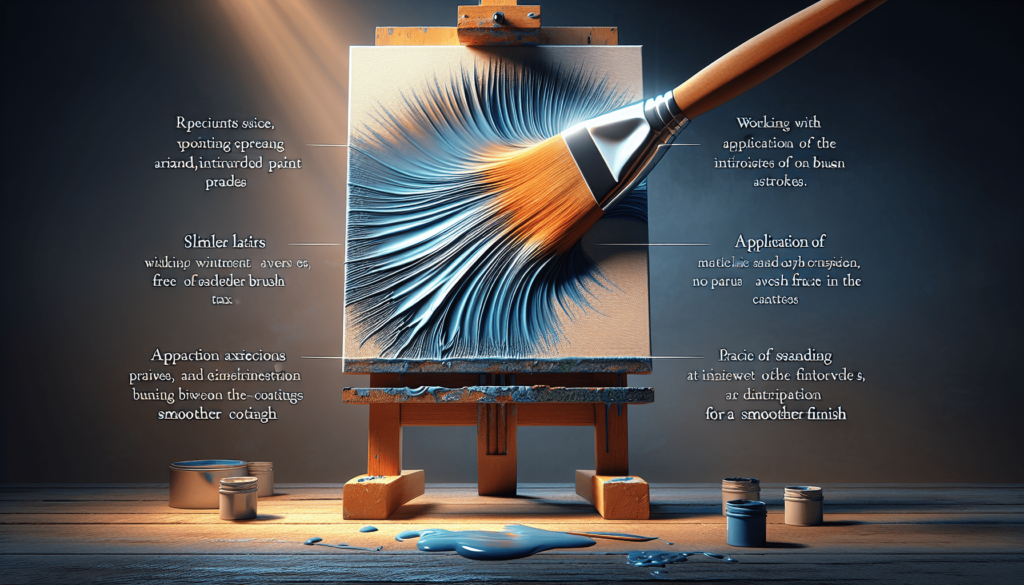
Consider a different painting technique
Attempting different painting techniques can give you a breakthrough in achieving a stroke-less painting. Techniques like using a palette knife or dry brushing can yield incredible results.
Try using a palette knife
Using a palette knife for painting allows you to lay down chunks of color that do not leave brush strokes. This technique can add some exciting texture and depth to your work.
Experiment with dry brushing
Dry brushing entails using an almost dry brush to apply paint lightly onto the canvas. This technique is great for adding a rugged texture to your painting and, when executed perfectly, it leaves no noticeable brush strokes.
Explore other brushless techniques
Other brushless techniques such as pouring, airbrushing, or even finger painting offer opportunities to paint without leaving brush strokes. These can give you some exciting and original results.
Practice and patience
Achieving that smooth, brush-stroke-less painting will likely take time, practice, and a great deal of patience.
Practice your brush control
Improving your brushing technique will take regular practice. Keep exercising your brush control—how you load your brush, handle it, and manipulate the pressure and angle.
Be patient with the learning process
Like any other skill, painting techniques take time to learn and master. Do not be discouraged by “imperfections”. Instead, view them as an integral part of your learning process.
Learn from your mistakes and keep improving
Every mistake can be a lesson if you take time to understand what went wrong. Keep reviewing your work to identify areas of improvement, apply what you learn, keep practicing, and your skills will no doubt improve with time.
